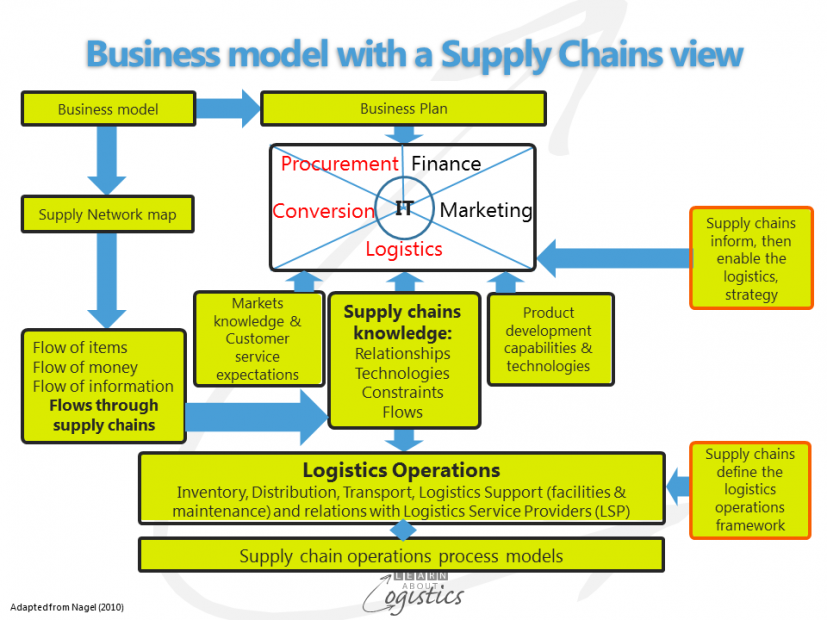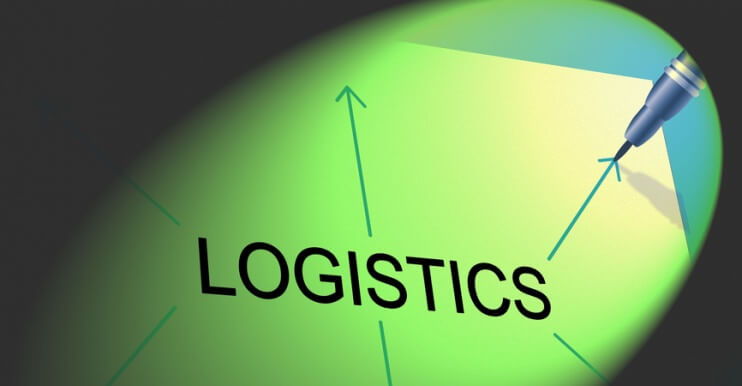No supply chain view in your business strategy.
Does your organisation have a strategic business plan that incorporates the supply network? If the answer is no it is not surprising, because few companies have a strategic plan that includes this critical part of the business. The reasons often put forward are:
- The three elements that should be the core of supply chains within the organisation – procurement, conversion/production and logistics are currently viewed with a cost focus They operate separately and cost efficiencies in the individual functions is the main requirement
- Supply chain is a cross-organisational concept that is not under the control of any one function, therefore each function includes their involvement in the supply chains within their own strategic plan
But gaining knowledge of supply chains and managing the three elements of supply chains as a single entity should be a core competence of your organisation.
Your organisations may develop a supply chain strategy, called by various terms – ‘operations’, ‘supply chain logistics’, ‘supply chains’ or ‘logistics’. The name is immaterial, so long as the longer-term planning process is structured for outcomes that can be implemented and are achievable.
Models have been developed to describe the activities required to manage material movements across external and internal organisational and functional boundaries. Examples are the SCOR model from APICS, the SCM model from the Global Supply Chain Forum and the CSCMP model. However, these useful models are process models, with two shortcomings:
- Not identifying Flows through the supply chains. Understanding and responding to flows of items, money and information enables the leverage of parties in an organisation’s supply chains (both upstream and downstream), gaining value that is potentially available
- Not identifying the relationship between corporate strategy and supply chain activities and with other functional areas
To address these requirements, Dr Pieter Nagel developed a logistics strategy model that we have updated. It does not replace the current process models, but rather sits above them.
Supply chain strategy model
Due to change being a constant source of pressure on organisations, management has two linked, but different tasks to be done in parallel. The first is taking advantage of current opportunities and the second is positioning the business for future opportunities. To achieve this, the corporate business plan is developed from the business model; this provides a focal point for thinking about the future of the business and the roles and objectives of the operational functions.
An organisation without a supply chain view has the operational criteria established in the business plan that informs the individual functional strategies. And each function will operate to maximise its performance, however measured.
In adopting a supply chain view an organisation will continue with its business model and business plan to achieve corporate objectives. The changes will occur in the function plans, as their objectives and strategic plan will (hopefully) align with the overall supply chain model.

With a supply chains view, the three core supply chain functions develop a more integrated approach:
- Procurement addresses all factors surrounding commercial relationships with suppliers
- Conversion addresses the operational and technical role of adding value to the purchased materials, whether in–house, at contract producers or test and pack facilities within 3PL warehouses
- Logistics has the objective to provide availability of items (and associated services) through the core inbound and outbound supply chains
Availability is the basis of supply chain competitiveness and requires choice from the five attributes of time and place (that is availability). These are speed; quality of the process; flexibility; dependability and cost. But these attributes can be constrained by where along each supply chain the business is located, the ease of handling and storage for the range of items, the basis on which orders are won and the essential qualifiers to be met before obtaining an order.
The selected attribute(s) are a part of the Network Map for the nodes and links in an organisation’s supply network. The map identifies elements such as:
- Core suppliers and customers at identified nodes
- Ownership, control or influence at specific nodes and links
- Direction and volume of items flowing through the nodes and links in each supply chain – the flow of items
- The form and function of inventory at critical nodes
- Contractual responsibilities – the flows of money and information
On the right side of the diagram above, the logistics strategy (plus procurement and conversion) is informed by the current structure of the supply chains that interact with the business. The logistics strategy will then be enabled by the changing supply chains for, as much as they have informed the logistics strategy, they may and probably will be subject to revision.
The supply chain structure also defines the framework within which Logistics Operations can execute the strategy (such as delivery periods for customers and shipping arrivals for inbound items). The framework also includes the extent to which logistics operations should be supplied by logistics service providers.
Using a business model with a supply chains view expands management’s concept of the organisation and the influence that external parties and events can have. A supply chain view allows a comprehensive strategy to be developed that incorporates the core supply chain functions, but also enables other functions to frame their strategies with a supply chain view.

